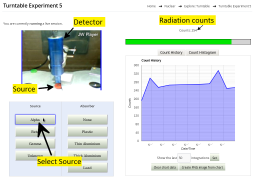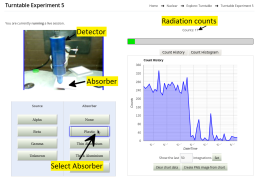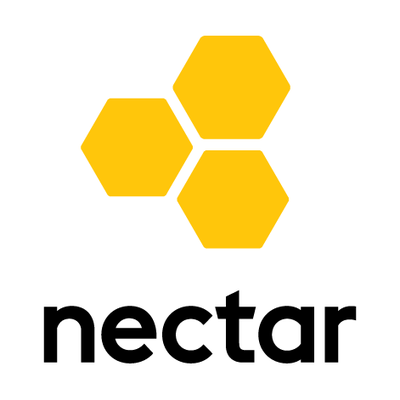Experimental stations
Exploring Radioactive Decay
What is radioactivity?
In this FAR Lab experiment you will monitor the radiation from four real radioactive samples; an alpha source, a beta source, a gamma source and an unknown source.
Three very different kinds of radiation come from radioactive materials: – “alpha”, “beta” and “gamma”. A radioactive sample of each type can be selected, as well as an “unknown” radiation type which you will try to determine.
We are also interested in how the barriers affect the radiation. That is, which barriers can the different types of radiation pass through and which barriers are they unable to pass through. All radioactive emissions are potentially very harmful to humans so it’s important to know this.
-
Clicking the buttons labelled “Source” lines up the detector (called a Geiger counter) with one of 4 real radioactive sources.
-
Clicking the buttons labelled “Absorber” puts a barrier made of a particular material in between the source and the detector.
- BE SURE TO ALLOW A FEW SECONDS FOR THE TURNTABLES TO MOVE INTO PLACE BEFORE CLICKING ON THE NEXT BUTTON
PART 1: Alpha Radiation
Method:
- In the column with the Source buttons, click on the “Alpha” source and in the Absorber column, click on “None”.
- Make at least five recordings of the counts and make a note in your lab books
- Wait for your Count History graph to record at least 30 seconds of data then create a PNG image. OR Download a copy of your data using the Data Browser (please note only the time and counts are saved, not the source or absorber).
- Repeat this process for the Plastic, Thin Aluminium, Thick Aluminium and the Lead barrier (be sure to leave some time for the graph to stabilise after you change your Absorber).
- Find the average number of counts for each barrier by averaging your recordings of the counts OR by ruling a horizontal line on your saved plot that runs through the middle of the points.
Question:
What did you notice when you went from no barrier to a barrier?
PART 2: Beta Radiation
Method:
6. Select the Beta source and Absorber None.
7. Repeat steps 2-5 that you did for the Alpha source.
Question:
What do you notice when you go from no barrier to the different kinds of barriers? Was there a difference between the thin and thick piece of Aluminium?
Can radioactive beta material be safely stored?
PART 3: Gamma Radiation
Method:
8. Select the Gamma source and Absorber None.
9. Again, Repeat steps 2-5 that you did for the Alpha source.
Question:
Does anything affect the average number of counts for gamma radiation? If so, how?
PART 4: The “Unknown” Source
Method:
10. Select the Unknown source and Absorber None.
11. Again, Repeat steps 2-5 that you did for the Alpha source.
Question:
What effect do the barriers have on the radiation from the unknown source? What kind of radiation do you think the unknown source is; alpha, beta or gamma?







